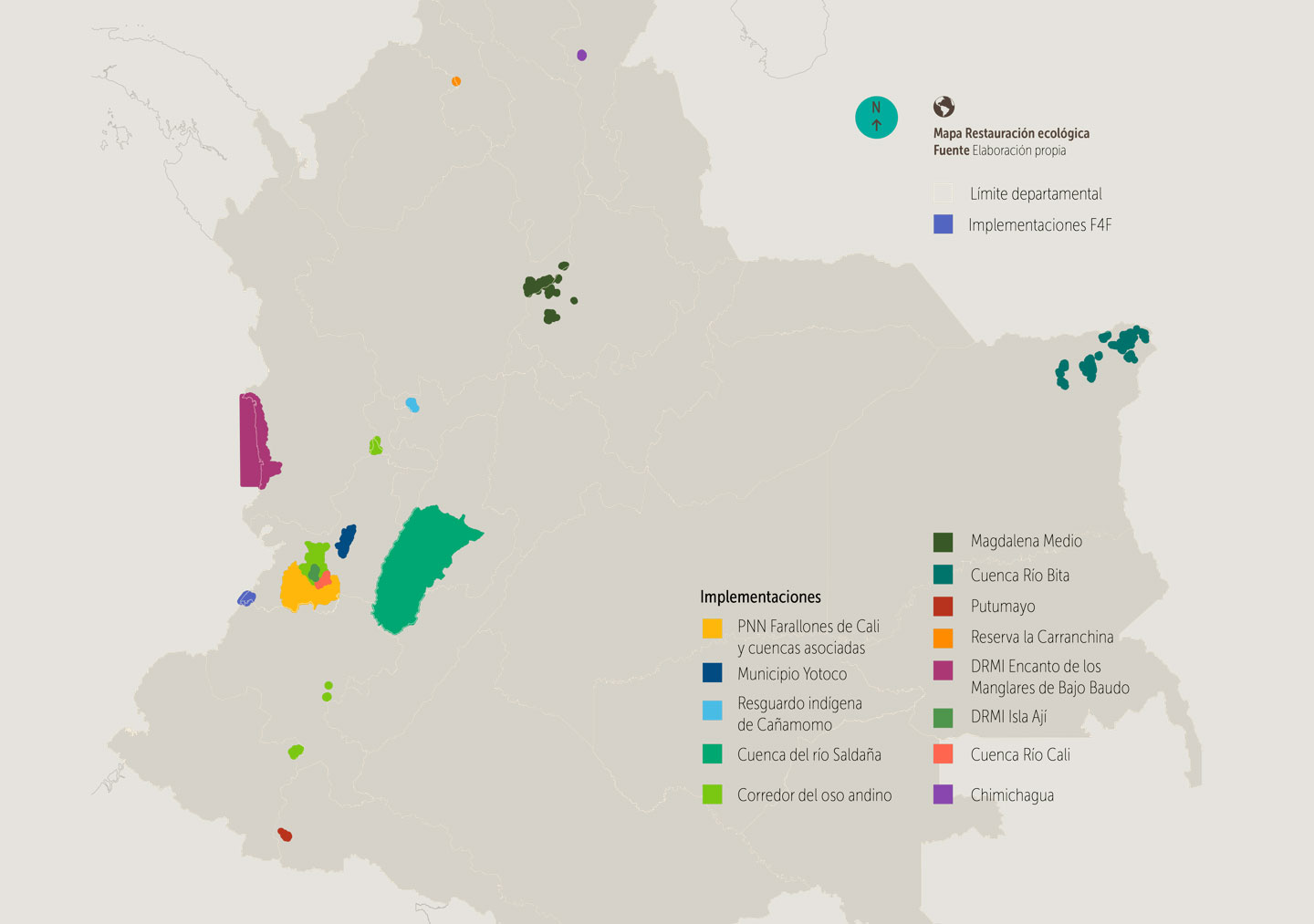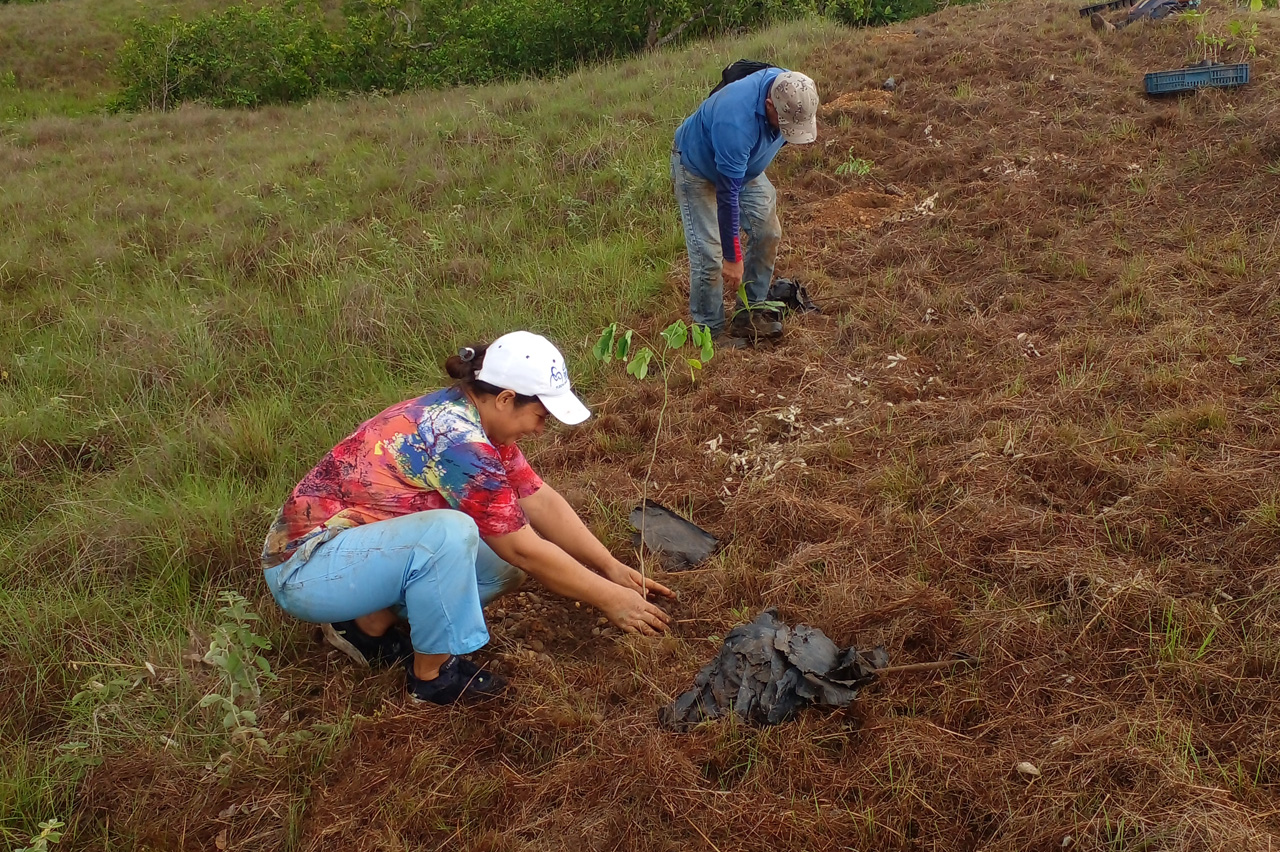Through restoration processes, we recover natural ecosystems that enhance connectivity and habitat quality for landscape species, while also contributing to the provision of ecosystem services.
This is a work that engages both individual and community interest, and the communities themselves celebrate it because vegetation recovery is linked to the care of water resources and silvopastoral and agroforestry systems.

Some of the work done by WCS Colombia to achieve these objectives, distributed across different regions of the country, includes the following:
For the Caranchina Turtle
In a 120-hectare area located in San Benito Abad (Sucre), acquired by WCS Colombia in collaboration with Turtle Survival Alliance (TSA) and Rainforest Trust, which is gradually being transformed into the country's first site dedicated to the protection of the caranchina turtle (Mesoclemmys dahli), 35,254 plants have been planted as part of a restoration process covering 30 hectares. Additionally, 24 agreements have been signed with partners.
 Photo: Yeiner Vega / WCS Colombia
Photo: Yeiner Vega / WCS Colombia
Support for the Chimichagua Sector, Cesar
Around the San Fernandera-Caracolí stream, located in the Guaraguo and Caracolí villages of this municipality in Cesar, 12,375 plants have been planted to date. These plantings help conserve one of the few places on the Atlantic Coast where the caranchina turtle (Mesoclemmys dahli) can still be found. A total of 12 hectares are currently being restored.
Restoration Effort in Valle del Cauca
The restoration plan has expanded to the Integrated Regional Management Districts (DRMI) in this department. One of these is the Chilcal district, located in Dagua, with 8,115 trees, as well as Isla Ají, in the Puerto Merizalde district of Buenaventura, with 10,525 plants. Isla Ají is a protected area that safeguards 24,600 hectares of mangrove ecosystems, guandales (woodland formations), naidizales (native forest), and portions of wet forests. On the other hand, 12,000 plants have been planted in La Cruz (Nariño) to support the Andean bear (Tremarctos ornatus) corridor. Additionally, 10,809 trees were planted around the Felidia and Aguacatal rivers, in the Cali River basin. This work has benefited over 46 hectares.
In the 'Encanto de los Manglare'
The restoration effort is impacting Chocó, where a group of women, in partnership with the Concosta community council and guided by professionals and expert botanists, successfully propagated 20,000 trees of seven native species. These were distributed across four large strategic sections of the rainforest and the Docampadó River basin, in the Puerto Bolívar district of Bajo Baudó municipality. This effort aims to restore these natural areas within the Integrated Regional Management District (DRMI) 'El Encanto de los Manglares del Bajo Baudó'. This project was made possible with the help of Codechocó.
 Foto: Hamleth Valois/Universidad Tecnológica del Chocó
Foto: Hamleth Valois/Universidad Tecnológica del Chocó
Por los hábitats de especies bajo amenaza.
En los paisajes de trabajo del Proyecto Vida Silvestre (PVS), 197 dueños de predios aliados han aceptado firmar acuerdos de conservación, que incluyen áreas en restauración.
De esta forma, hemos mejorado las condiciones de los hábitats de especies de fauna amenazada como la marimonda (Ateles hybridus), el paujil de pico azul (Crax alberti), el oso andino (Tremarctos ornatus) y la tortuga carranchina (Mesoclemmys dahli). Todo esto a través de estrategias de rehabilitación de ecosistemas asociados al recurso hídrico, enriquecimiento de bosques degradados, restauración de poblaciones de especies maderables amenazadas y restauración productiva con sistemas agroforestales de café, cacao y silvopastoriles. Más información sobre este trabajo liderado por el PVS, en tres paisajes estratégicos, aquí.
Traslated with AI support